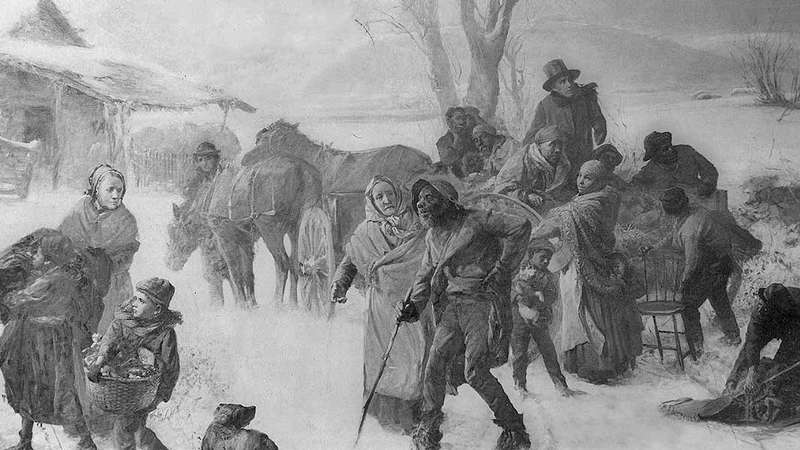
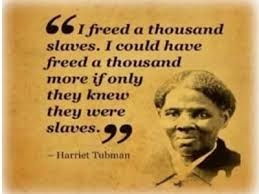
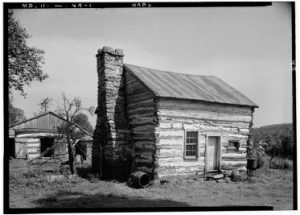
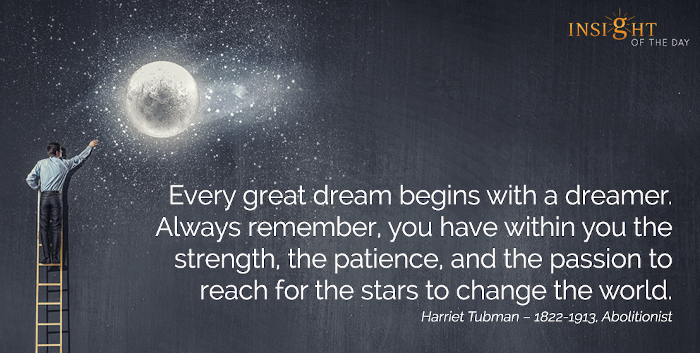
Harriet Tubman: A Journey of Courage and Freedom
Harriet Tubman’s legacy is one of unparalleled bravery, resilience, and an unwavering commitment to justice. This page honors her remarkable journey, showcasing over 30 powerful videos that tell the story of a woman who risked her life to lead others to freedom. From her escape from slavery to her role in the Underground Railroad, Tubman’s actions continue to inspire generations in the fight for equality and human rights. Explore her story through these captivating videos that highlight the significance of her contributions to American history and the ongoing pursuit of freedom and justice.
Harriet Tubman: Een Reis van Moed en Vrijheid
De erfenis van Harriet Tubman is er een van ongeëvenaarde moed, veerkracht en een onwankelbaar streven naar gerechtigheid. Deze pagina eert haar opmerkelijke reis, met meer dan 30 krachtige video’s die het verhaal vertellen van een vrouw die haar leven riskeerde om anderen naar vrijheid te leiden. Van haar ontsnapping uit slavernij tot haar rol in de Underground Railroad, Tubman’s daden blijven generaties inspireren in de strijd voor gelijkheid en mensenrechten. Verken haar verhaal door deze boeiende video’s die de betekenis van haar bijdragen aan de Amerikaanse geschiedenis en de voortdurende zoektocht naar vrijheid en gerechtigheid belichten.
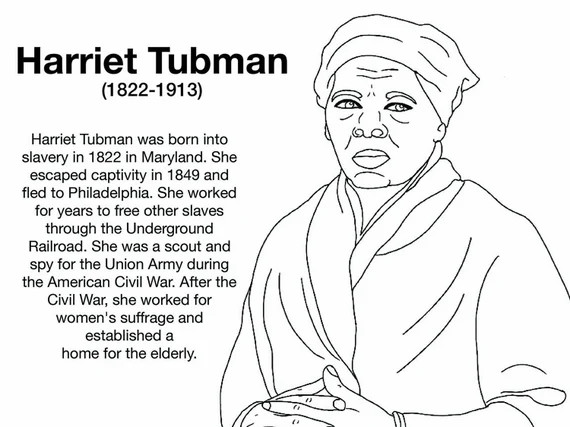
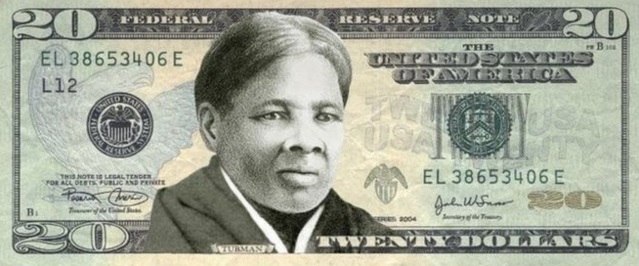
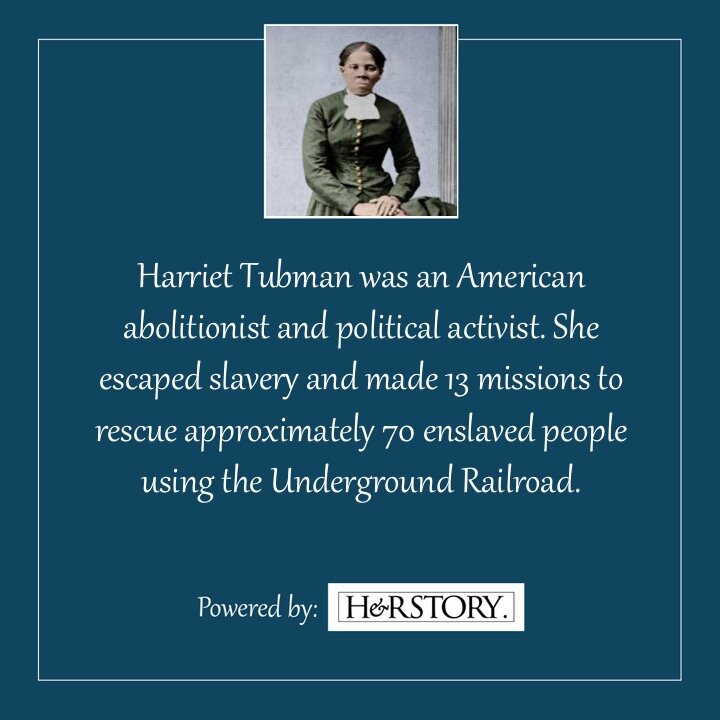
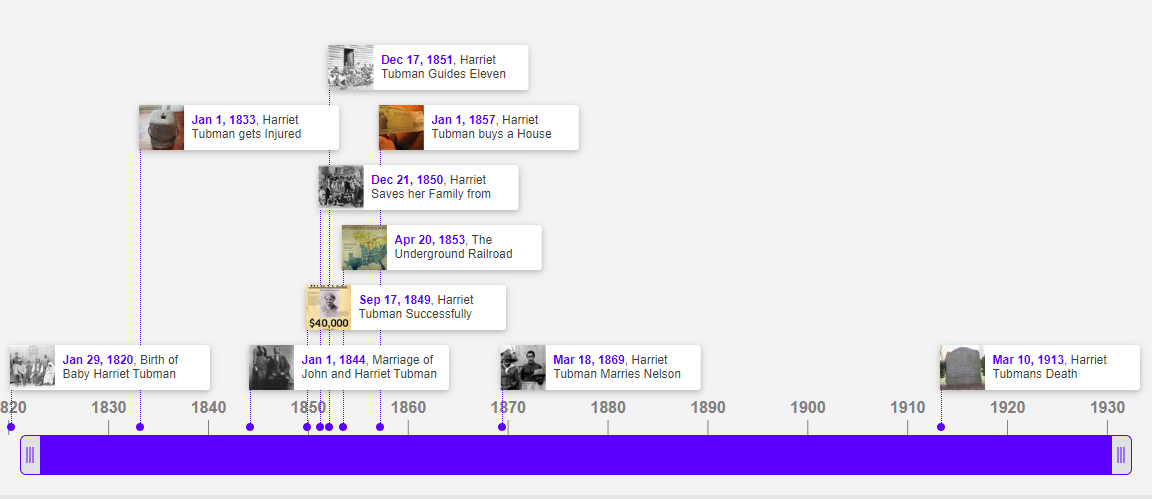
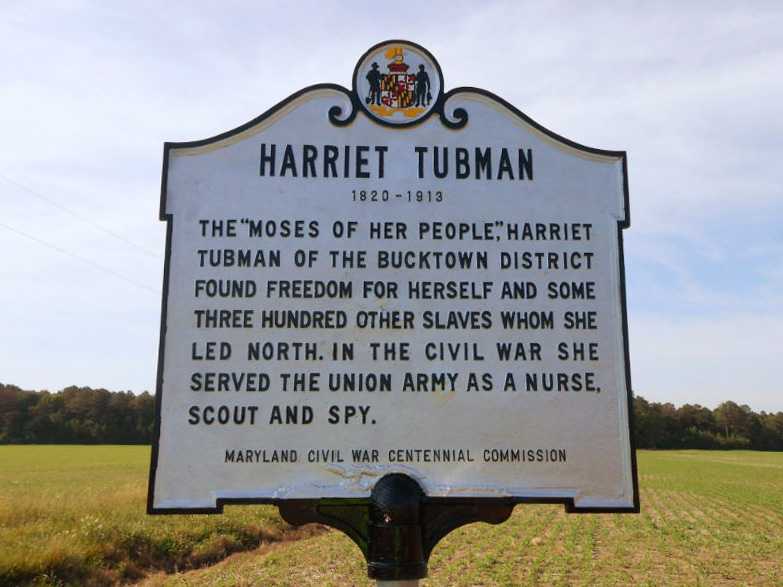
1 Harriet Tubman’s Visions – Spiritual or Medical? – Biographical Documentary
27 jan 2023
Harriet Tubman Visions – Spiritual or Medical?
Harriet Tubman is one of the most inspirational figures in American history. The stories of her fearless exploits helping the enslaved escape to safety on the Underground Railroad are justly famous, but less well-known is the fact that she sustained a brain injury in childhood which left her with crippling headaches and a serious neurological disorder for the rest of her life.
At the age of 12 or 13 a plantation overseer threw a two-pound iron weight at her head and knocked her out cold. She had to be carried back to the farm where she was working and was barely conscious for two days. She received no medical care, and as soon as she was on her feet, she was forced back into the fields to work, with the blood and sweat rolling down her face.
She had a scar and a permanent dent on her forehead, consistent with a depressed skull fracture and afterwards she started experiencing episodes of irresistible sleepiness which would come on suddenly during conversations and when carrying out everyday activities and no one would be able to snap her out of them. The injury also coincided with a burgeoning of religious enthusiasm which she had not shown previously. When she woke up from the sleeping fits she said she had been sent messages from God.
In this historical documentary, I explore the strange neuroscience of Harriet Tubman’s visions.
A special thank you to Ella Last for her assistance in researching this video!
Copyright Disclaimer
The primary purpose of this video is educational. I have tried to use material in the public domain or with Creative Commons Non-attribution licences wherever possible. Where attribution is required, I have listed this below. I believe that any copyright material used falls under the remit of Fair Use, but if any content owners would like to dispute this, I will not hesitate to immediately remove that content. It is not my intention to infringe on content ownership in any way. If you happen to find your art or images in the video, please let me know and I will be glad to credit you.
References
Bailey, L., and Harries, B. (2009). Harriet Tubman: Myth, Memory and History. Ethnicity and Race in a Changing World, 1(2), 93.
Boster, D. H. (2009). An” Epeleptick” Bondswoman: Fits, Slavery, and Power in the Antebellum South. Bulletin of the History of Medicine, 271-301.
Devinsky, O., and Lai, G. (2008). Spirituality and religion in epilepsy. Epilepsy and Behavior, 12(4), 636-643.
Greyson, B., Fountain, N. B., Derr, L. L., and Broshek, D. K. (2014). Out-of-body experiences associated with seizures. Frontiers in Human Neuroscience, 8, 65.
Hobson, J. (2019). Of “sound” and “unsound” body and mind: Reconfiguring the heroic portrait of Harriet Tubman. Frontiers: A Journal of Women Studies, 40(2), 193-218.
Larson, K. C. (2004). Bound for the promised land. New York: Ballantine.
Sabourin, V. M., Holland, R., Mau, C., Gandhi, C. D., and Prestigiacomo, C. J. (2016). Head injury in heroes of the Civil War and its lasting influence. Neurosurgical focus, 41(1), E4.
Sernett, M. C. (2007). Harriet Tubman: Myth, memory, and history. Duke University Press.
Images
Public Domain via Wikimedia Commons
Wellcome Foundation
Civil War Museum, Harrisburg
Harriet Tubman National Historical Park
Library of Congress
Other images and video samples Fair Use
Music
Children, Go Where I Send Thee – The Singing Sergeants of the United States Air Force Band. Public Domain via Wikimedia Commons
Deep River – Paul Robeson (1940) – Public domain via Internet Archive
Down by the Riverside – Mary C – Public domain via Wikimedia Commons
Down on the Old Campground Dinwiddie Colored Quartet – Public domain via Internet Archive
Go Down Moses – Les Petits Chanteurs de Montigny CC2.0 via Wikimedia Commons
John the Revelator – The Spiritual Four Quartet – public domain via Wikimedia Commons
Nobody Knows the Trouble – Rabanus Flavus – CC0 via Wikimedia Commons
Pharaoh’s army got drowned – Colored quartet – Public domain via Wikimedia Commons.
Sometimes I Feel Like A Motherless Child – Bogdan Firla CC Attribution License via YouTube
Swing Low, Sweet Chariot – The Fisk Jubilee Singers – Public domain via Wikimedia Commons
Video produced by Graeme Yorston and Tom Yorston
2 The Underground Railroad Explained in 10 Minutes
Harriet Tubman was an African American abolitionist, humanitarian, and political activist who played a significant role in the fight against slavery in the United States. Here are some key points about Harriet Tubman:
Born into Slavery: Harriet Tubman was born into slavery in Maryland around 1822, and her birth name was Araminta Ross. She was subjected to the brutal conditions of slavery, including physical abuse and harsh labor.
Escape from Slavery: In 1849, Tubman escaped from slavery and made her way to freedom in the North. She embarked on a dangerous journey known as the Underground Railroad, a network of safe houses and secret routes that helped escaped slaves reach free states or Canada.
“Moses” of Her People: Tubman earned the nickname “Moses” for her fearless leadership in guiding enslaved individuals to freedom. She made 19 trips back to the South and rescued over 300 slaves, including family members and other individuals, without losing a single passenger.
Abolitionist and Activist: Tubman became an active abolitionist and worked alongside prominent abolitionists such as Frederick Douglass and John Brown. She also participated in the women’s suffrage movement, advocating for the rights of women, particularly African American women.
Civil War and Union Spy: During the Civil War (1861-1865), Tubman worked as a cook, nurse, and spy for the Union Army. She used her knowledge of the South and her network of contacts to gather intelligence and provide critical information to Union commanders.
Humanitarian Work: After the Civil War, Tubman dedicated her life to humanitarian causes. She established a home for elderly and indigent African Americans, and also worked to promote education and social justice for African Americans.
Legacy and Honors: Harriet Tubman’s contributions to the abolition of slavery, her bravery, and her humanitarian efforts have earned her widespread recognition and honors. She is celebrated as an American hero, and her face is set to appear on the U.S. $20 bill in the near future, becoming the first African American woman to be featured on U.S. currency.
Overall, Harriet Tubman’s life and legacy are a testament to her unwavering determination, courage, and commitment to the abolition of slavery and the fight for equality and social justice. Her story continues to inspire people around the world.
1 Harriet Tubman: They called her Moses (2018) | Full Movie | Dr. Eric Lewis Williams
26 apr. 2020
20 sep. 2019
3 Harriet Tubman Documentary
18 dec. 2019
4 Harriet Tubman’s road to freedom
20 okt. 2019
5 New national park celebrates Harriet Tubman’s legacy
5 mrt. 2017
6 What You Never Knew About Harriet Tubman
15 mei 2014
7 ‘I Could Have Freed a Thousand More Slaves If They Knew They Were Slaves’ | Harriet Tubman
6 mrt. 2019
8 Here’s What Harriet Got Wrong About Harriet Tubman’s Life
6 nov. 2019
My name is… | 0:00
The mystery of John Tubman | 1:32
Retracing her steps | 2:19
Sparking an escape | 3:09
The visions of Harriet | 4:14
Gideon Brodess | 5:43
Marie Buchanon | 6:48
Bigger Long | 8:11
The Fugitive Slave Act | 9:30
Read Full Article: https://www.grunge.com/173225/things-…
9 The Breathtaking Story of Harriet Tubman
Back to menu IMPORTANT CONTENT
1 sep. 2020
10 The 1619 Project details the legacy of slavery in America
18 aug. 2019
11 New York Times’ “1619 Project” explores legacy of slavery in America
20 aug. 2019
12 Harriet Tubman and the Underground Railroad
A documentary based off of Harriet Tubman and the Underground Railroad.
13 Harriet Tubman Brought to Life: Facial Re-creation & History of the Abolitionist & Union Spy
17 feb 2023
Timestamps:
0:00 Early Life
6:55 Escape to Freedom
9:08 Fugitive Slave Acts
10:03 Roots of the Underground Railroad
10:46 Black Moses
14:48 Civil War
16:45 Later Life
17:49 Harriet’s Appearance
18:41 Re-creations Revealed
Today, we’ll be talking about one of the bravest women in American History, Harriet Tubman. Known as “The Moses of her People,” she escaped slavery and made it her life’s mission to help rescue others. We’ll also bring her to life with some re-creations at the end of the video.
Around 1820, Harriet Tubman was born Araminta Ross was born on a plantation in Dorchester County, Maryland. From a very early age, Harriet was hired out at 5 years old to work as a nursemaid. For years, she endured this, and later describes this time period as a time of “severe neglect” with the scars on her neck to prove it.
She began to become religious, finding a strong faith in God and using it as a steadying force in her chaotic life. Even after these years of harsh punishment, Harriet had never lost that spark of resistance.
When she was around 12 years old, she was sent to the general store to do some shopping… but on her way there, she caught sight of a man being chased and immediately knew that he was a runaway. As his pursuers got closer, Harriet purposely stood her ground, getting in the way of the irate slaver.
The overseer then grabbed a heavy weight from the store counter, intending to hit the runaway, but instead, he hit Harriet directly in the head, breaking her skull. After the severe head trauma, she had frequent headaches and narcolepsy.
In 1844, Harriet married a free black man named John Tubman, and this is when she changes her name from Araminta Ross, to how we know it – as Harriet Tubman. Many historians believe that her changing both her first and last name indicates that she wanted to separate herself from her previous identity, and possibly, that she was already planning her escape.
On September 17th, 1849, Harriet and her two brothers Ben and Henry, made their astonishing bid for freedom.
Not long after her return, she escaped once again, this time alone. Over the course of the next three weeks, she traveled the harrowing 90 miles to the Mason-Dixon Line, hiding in friendly houses during the day, and traveling through the night using the North Star to guide her. Finally, she reached the free state of Pennsylvania. Harriet Tubman was a free woman. The Underground Railroad, the network of free people, both black and white, that were helping guide slaves to freedom, was now growing dramatically.
Over the next 11 years, Harriet became a Conductor on the Underground Railroad – and then became an organizer, and a leader. She would go back at least 13 times, although some historians believe that Harriet was being modest with this number.
But the life of an Underground Railroad operator was hard and dangerous. Harriet was determined to guide families to freedom, but she was also forced to make hard decisions just to keep them safe.
Conductors on the Railroad used genius means of disguise to protect themselves. Harriet herself was fond of dressing like a free Black man, or elderly woman.
Although the exact number of escapes she guided is unknown – Harriet herself reported a modest 70 escapes, whereas her biographer estimated 300 – she never lost a passenger.
For the rest of Harriet’s life, she would remain on her farm with her family, and continue being an activist for women’s rights.
On March 10, 1913 after a long life of service to others, Harriet died, surrounded by her loved ones. Unfathomably selfless, brave and cunning, she rose to the challenge of her time, and against all odds, she led her people to the promised land.
What did Harriet Tubman really look like?
We are lucky enough to have a few photographs of Harriet, one of which was just discovered a few years ago. This photograph was taken around 1868, when Harriet would have been in her early forties. She’s wearing nice, middle class clothing, and looks every bit as strong and determined as what you’d imagine.
It’s hard to tell, but it does look a bit like the head injury she suffered at the age of 12 affected her face – you can see a slight lazy eye in her right eye, and a downturned lip on the same side. The same can be seen on images of Tubman as she aged as well.
I’ve used the 1868 portrait for my re-creation. Since we don’t have any portraits of Tubman as a young woman, I’ve created a young version of her reconstructed face, as well as then aged her up to match her older photographs. So let’s see Harriet Tubman brought to life at every age, now.
14 Harriet | Harriet Tubman Saves Her Niece
4 feb 2023 #CynthiaErivo #Harriet #FocusFeatures
In a heroic journey to free her family, Harriet Tubman (Cynthia Erivo) travels back to the plantation that she was once forced to call home. Finding other enslaved people along the way, she concocts a plan to hide them all in plain sight while attempting to cross through a bridge barricaded by plantation owners trying to capture her.
Film Synopsis:
Based on the thrilling and inspirational life of an iconic American freedom fighter, Harriet tells the extraordinary tale of Harriet Tubman’s escape from slavery and transformation into one of America’s greatest heroes. Haunted by memories of those she left behind, Harriet (Cynthia Erivo) ventures back into dangerous territory on a mission to lead others to freedom. With allies like abolitionist William Still (Leslie Odom, Jr.) and the entrepreneurial Marie Buchanon (Janelle Monae), Harriet risks capture and death to guide hundreds to safety as one of the most prominent conductors of the Underground Railroad. Witness the story of a woman who defied impossible odds to change the course of her life and the fate of the nation.
15 Harriet Tubman: A Maryland Story
16 The Slave Who Led Black Americans To Freedom
00:57 Harriet Tubman: born into slavery
01:55 A blow to the head
02:24 Drapetomania
03:15 Tubman’s escape
04:18 The Underground Railroad
05:26 Becoming a conductor
06:39 The Fugitive Slave Act of 1850
08:11 Descent into civil war – and the Combahee Ferry Raid
09:47 Victory and freedom
10:26 A nonagenarian inspiration
17 Harriet Tubman
18 Harriet Tubman Museum
19 Harriet Tubman Underground Railroad Visitor Center – C-SPAN3
20 Harriet Tubman / Sojourner Truth (1992)
Back to menu IMPORTANT CONTENT
1 aug 2019
Black history videos from the early 90s. Shared for historical purposes. I do not own the rights.
#####
Reelblack’s mission is to educate, elevate, entertain, enlighten, and empower through Black film. If there is content shared on this platform that you feel infringes on your intellectual property, please email me at Reelblack@mail.com and info@reelblack.com with details and it will be promptly removed.
21 Harriet Tubman and The Underground Railroad (1964) | Ruby Dee
25 sep 2019
The excellent Ruby Dee plays the escaped slave Harriet Tubman and her attempts to rescue enslaved family members and friends through the pre-Civil War Underground Railroad. aka “Go Down Moses.” With Brock Peters, Ossie Davis, Isabel Cooley and Ethel Waters. Shared for historical purposes. I do not own the rights.
#####
Reelblack’s mission is to educate, elevate, entertain, enlighten, and empower through Black film. If there is content shared on this platform that you feel infringes on your intellectual property, please email me at Reelblack@mail.com and info@reelblack.com with details and it will be promptly removed.
22 The Life of Harriet Tubman
Harriet Tubman is a towering figure in American history — but you might not even know how much she truly accomplished.
23 America’s Journey Through Slavery: Harriet Tubman and Her Escape To Freedom Trailer (#GH4977)
Back to menu IMPORTANT CONTENT
24 She Escaped Enslavement And Became A Symbol For Freedom | Harriet Tubman #blackhistorymonth
25 Harriet Tubman
26 Carry Me Home: Harriet Tubman (2016) | Full Movie | Karen Abercrombie | Lindsey Grimble
14 mei 2020
Carry Me Home is a short film following the true story of Maria Ennals (Lindsey Grimble) and her family in the Antebellum South in the cold winter of 1860.
Maria is a young mother trapped in slavery who seizes the opportunity to escape with her family when she encounters HARRIET TUBMAN (Karen Abercrombie, War Room). Harriet leads the young family through a number of trials on the Underground Railroad, causing them all to question whether or not freedom is worth the price they must pay to obtain it.
Director: Joshua Henry
Starring: Karen Abercrombie, Lindsey Grimble, Joel Ashur
27 Harriet Tubman: Soldier of Freedom
19 sep. 2019
28 Harriet Tubman: Fearless Freedom Fighter who Liberated Hundreds of Slaves | Biography
26 jan 2010 #Biography
Born into slavery in Maryland, Harriet Tubman escaped to freedom in the North in 1849 to become the most famous “conductor” on the Underground Railroad. Tubman risked her life to lead hundreds of family members and other slaves from the plantation system to freedom on this elaborate secret network of safe houses
29 The Underground Railroad retells slavery’s horrors with a dreamlike twist
30 The Fugitive Slave Act: Compelling Compliance with Evil (Black Culture)
Back to menu IMPORTANT CONTENT HAS TO BE LISTENED TO
24 mrt 2023 #BlackHistory #BlackCulture #BlackLiterature
In 1850, one of America’s History’s Worst Laws was Passed: The Fugitive Slave Act. What can be described as one of the darkest days in America’s history, which would ultimately lead to the American Civil War, a bloody conflict that saw hundreds of thousands lay down their lives for black freedom.
The Fugitive Slave Act of 1850, not the first but definitely the harshest, was a dark chapter in American history that represented a betrayal of the principles of freedom and justice upon which our nation was founded.
In this video, we will turn back the hands of time and take you to a dark period in American history. Back to 1850, a nightmare for free blacks and escaped black slaves.
In the mid-19th century, slavery was a deeply ingrained part of American society. Slaves were considered property, and their owners had complete control over their lives. Slaves were forced to work long hours in harsh conditions, and they were often subjected to physical and emotional abuse. Families were torn apart, and children were separated from their parents, sold to different owners and sent to different parts of the country.
Many slaves tried to escape from their owners, seeking freedom in the North or in Canada. In these areas, slavery had been abolished, and blacks could live as first-class citizens. However, this was no easy feat, as runaway slaves were hunted by slave catchers who were hired by their owners. These catchers would track down the runaways and bring them back to their owners, often using force and violence in the process.
Now, let’s fast forward to 1850. At this point, the issue of slavery had become a major political issue in the United States.
The country was deeply divided, with some states advocating for the abolition of slavery while others staunchly defended it. The Fugitive Slave Act was passed as part of a compromise between these two factions.
Under the law, any person who assisted a runaway slave could be fined or imprisoned. This included individuals who simply provided food or shelter to a runaway slave. In addition, federal marshals were authorized to arrest anyone suspected of being a runaway slave, and they were required to return the slave to their owner, even if the slave had been living in freedom for many years.
For those who were enslaved, the act represented a brutal reality. The law meant that anyone, anywhere, could be seized and sent back to a life of bondage. For free blacks, it was a constant threat of being falsely accused of being a runaway slave and being dragged into slavery.
The process of capturing runaway slaves was a cruel and inhumane one. Slave catchers were hired to hunt down escaped slaves, and they were often ruthless in their tactics. They would track down runaway slaves using bloodhounds, and when they found them, they would use any means necessary to capture them.
Free blacks were also targeted by slave catchers who could kidnap them, falsely accuse them of being runaway slaves and then force them into slavery. They were subjected to a process called “slave-catching,” where they were captured, jailed, and then brought before a judge. In most cases, the judges would rule in favour of the slave catchers, and the accused would be sent into slavery.
The process was devastating for black families, who have torn apart as a result of the Fugitive Slave Act. Fathers, mothers, and children were separated from each other, often never seeing each other again. The psychological trauma of being captured and forced into slavery was profound and long-lasting.
Welcome to Black Journals, a channel dedicated to exploring and sharing the rich history, literature, and culture of the African American community. Our channel takes a deep dive into the pages of black journals and uncovers the hidden stories and untold truths of the black experience.
From the harrowing legacy of the Atlantic slave trade to the powerful impact of black literature and the black narrative, we shine a light on the unwritten history and the stories that have been overlooked or suppressed. We celebrate the black legacy and the resilience of the African diaspora, as well as the activism and political history of African Americans in their ongoing fight for justice and equality.
Our channel also explores the beauty and creativity of black art, literature, and culture, offering a platform for African American voices and perspectives to be heard and appreciated. Come along with us as we turn the pages of black journals and uncover the pages of Black Pages of History.
31 The 5 Most DARING Escapes From Enslavement | #blackhistorymonth
Back to menu IMPORTANT CONTENT
32 The Underground Railroad
29 okt 2021
Join Gary Kent as he pays a visit to another world, another age, a nineteenth-century New England village, that has been rebuilt. He talks about why a town like this embodied freedom—-as a key destination for the Underground Railroad. Follow in their footsteps as we discover how people took a voyage to freedom – and how even today we can find freedom when we follow in the footsteps of Jesus.
ABOUT THE MINISTRY
The Incredible Journey is a donor-funded ministry passionate about communicating our bold vision of sharing the good news of Christ and preparing people for the soon coming of Jesus.
We are devoted to giving Biblical answers to life’s questions through television, the Internet, social media, Bible Centre, evangelistic ministry and Christian living and faith-sharing resources.
=====================================
=====================================
ABOUT OUR SPEAKER
Gary Kent is the speaker for The Incredible Journey media ministry. He holds a B.A. in Theology, M.A. in Ancient History & Archaeology, and M. in Divinity. He is an archaeologist who has excavated numerous sites throughout Israel and Jordan. As an internationally-acclaimed speaker and TV presenter, he has spoken and produced numerous documentaries on subjects including the Bible, Bible prophecy, world events and natural health. His passion is to share the good news of Jesus’ imminent return.
33 Octopus Attack Prank